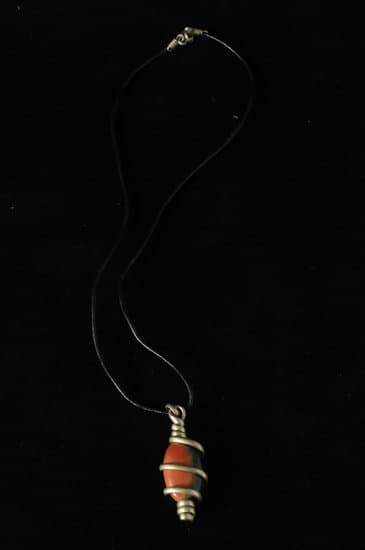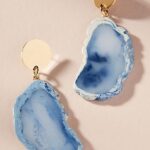Diamond jewelry has long held a special place in our hearts and minds, captivating us with its dazzling beauty and timeless elegance. From engagement rings to necklaces, earrings to bracelets, diamonds have become synonymous with luxury and sophistication. But have you ever wondered just how many diamonds are made into jewelry? In this article, we will delve into the world of diamond manufacturing and explore the journey from rough stone to refined jewel.
To truly appreciate the brilliance of diamond jewelry, it is important to understand the intricate process that brings these precious gemstones to life. The journey begins with diamond extraction, where diamonds are sourced from mines worldwide. We will uncover the secrets behind ethical and sustainable mining practices that ensure the beauty of diamonds does not come at a cost to human lives or the environment.
Once extracted, the rough stones undergo a transformation through diamond cutting and polishing. This artful craft involves shaping each diamond to maximize its brilliance and fire. We will explore the various shapes and styles that diamonds can take, from traditional round cuts to more contemporary designs.
The value of diamond jewelry is determined by several factors known as the Four C’s: clarity, color, cut, and carat weight. These characteristics play a crucial role in selecting diamonds for jewelry. By understanding how these factors influence a diamond’s value, we gain insights into why certain pieces may be more coveted than others.
So join us on this fascinating exploration into the world of diamond jewelry. As we delve deeper into each stage of production – from extraction to setting – we will uncover the beauty and intrigue that lies behind every exquisitely crafted piece. Whether you are an admirer or collector of diamond jewelry, this article promises to provide valuable insights into the brilliance behind these enduring symbols of beauty and luxury.
The Journey from Rough to Refined
The discovery and extraction of diamonds are the pivotal first steps in the journey from rough to refined diamond jewelry. Diamonds are sourced from mines worldwide, with some of the most notable mines located in countries like Russia, Botswana, Canada, and Australia. These mines yield a wide range of diamond qualities, including both gem-quality diamonds for jewelry and industrial-grade diamonds for use in various industries.
Ethical and sustainable mining practices have become increasingly important in the diamond industry. To ensure responsible sourcing, many companies adhere to international standards such as the Kimberley Process Certification Scheme. This process aims to prevent conflict diamonds or “blood diamonds” from entering the market by ensuring that they do not finance armed conflicts or human rights abuses. Additionally, sustainable mining practices are employed to minimize environmental impact and support local communities.
During the extraction process, raw diamonds are typically found in kimberlite ore or alluvial deposits. Extracting these diamonds involves several methods depending on their location. In open-pit mining, large machinery is used to remove tons of earth and rock to reach the diamond-bearing material underneath. Underground mining involves digging tunnels into the earth to access deeper diamond deposits. Lastly, alluvial mining involves extracting diamonds from riverbeds or ocean floors where they have been naturally transported over time.
Once these rough diamonds have been successfully extracted, they undergo sorting and grading processes before being sent for cutting and polishing. The sorting process involves categorizing rough stones based on their size, shape, color, and purity.
This helps determine which stones will be used for jewelry versus industrial purposes. After sorting, rough diamonds are graded based on color intensity (ranging from colorless to fancy colored), clarity (the presence of internal flaws), cut quality (the proportioning and symmetry of facets), and carat weight (the unit of measurement for a diamond’s size).
Shaping Brilliance
The Intricate Art of Diamond Cutting and Polishing
In the journey from rough to refined, diamond cutting and polishing play a crucial role in transforming a raw diamond into a brilliant gemstone for jewelry. The process requires skilled craftsmanship and precision to enhance the natural beauty and brilliance of the stone.
Diamond cutting involves carefully shaping the rough stone into various facets to maximize its light reflection and refraction, creating sparkle and fire. Highly skilled diamond cutters use specialized tools, such as bruting machines and lasers, to create precise cuts that bring out the best qualities of each individual stone. The cutting process requires immense expertise as a single wrong move can lead to valuable material loss or compromised brilliance.
Different Shapes and Styles of Diamonds Used in Jewelry
Diamonds used in jewelry come in various shapes, offering countless options for designers and consumers alike. Some popular shapes include round brilliant, princess, oval, cushion, emerald, pear, marquise, asscher, radiant, and heart shape. Each shape has its own unique characteristics that appeal to different personal styles and design preferences.
Apart from shape, another important aspect of diamond cutting is determining the style or faceting pattern of the stone. Traditional cuts such as brilliant-cut or step-cut are timeless choices that highlight the diamond’s brilliance or its natural clarity. On the other hand, modern cutting techniques have given rise to innovative styles such as rose-cut or mixed-cut diamonds that provide a distinct look with a blend of modernity and vintage charm.
Exceptional Skill: Creating Exquisite Diamond Jewelry
The art of diamond cutting is not limited to shaping rough stones into sparkling gems; it also extends to creating stunning diamond jewelry. Skilled craftsmanship is vital in crafting intricate settings for diamonds in various pieces like rings, necklaces, bracelets, earrings etc. This includes deciding on the number of prongs needed for a secure setting, ensuring the ideal height of the stones for optimum visibility, and creating harmonious proportions within the jewelry design.
Additionally, the skillful arrangement and placement of diamonds in the jewelry setting is crucial to highlight their brilliance and maximize their overall visual impact. Diamond setters carefully consider factors like symmetry, balance, and alignment to achieve an exquisite finished product. Whether it’s a delicate pave setting or an intricate halo design, every piece of diamond jewelry requires the expertise of skilled craftsmen to bring out its full potential.
Overall, diamond cutting and polishing are integral steps in creating stunning diamond jewelry that dazzles with its beauty and sophistication. The combination of precision cutting techniques and exceptional craftsmanship shape diamonds into mesmerizing gemstones that captivate admirers around the world.
The C’s of Diamonds
When it comes to determining the value and quality of a diamond, there are four essential characteristics that play a significant role: clarity, color, cut, and carat. These factors are often referred to as the “Four C’s” of diamonds and are used by jewelers and gemologists to assess the overall worth of a diamond.
1. Clarity:
Clarity refers to the presence of any internal or external flaws or blemishes within a diamond. These imperfections, known as inclusions and blemishes respectively, can affect how light travels through the stone and impacts its brilliance.
The Gemological Institute of America (GIA) grades clarity on a scale ranging from Flawless (no visible inclusions or blemishes under 10x magnification) to Included (inclusions visible to the naked eye). It is important to note that many diamonds have inclusions that are invisible to the naked eye but can still impact their overall value.
2. Color:
Color assessment considers how closely a diamond approaches colorlessness. While most diamonds appear white or colorless, they can actually exhibit subtle hues within a range from D (colorless) to Z (light yellow or brown). The less color present in a diamond, the rarer and more valuable it becomes. Exceptionally rare colored diamonds fall outside this color range and are known as fancy-colored diamonds.
3. Cut:
The cut of a diamond refers not only to its shape but also to how effectively it interacts with light. A well-cut diamond will reflect light internally from one facet to another before reflecting it back out through the top of the stone. This creates maximum brilliance, fire (the dispersion of colored light), and scintillation (sparkle). The GIA grades cuts on a scale ranging from Excellent to Poor based on criteria such as brightness, fire, scintillation, and proportions.
4. Carat:
Carat weight is a measure of a diamond’s size, with one carat equaling 200 milligrams. It is important to note that carat weight does not necessarily determine a diamond’s value or beauty. While larger diamonds are generally more rare and valuable, other factors such as cut, color, and clarity also play a significant role in determining the overall worth of a diamond.
Understanding the Four C’s can be crucial when selecting a diamond for jewelry. The combination of these factors allows buyers to make informed decisions based on their personal preferences and budget. Whether choosing a diamond engagement ring or any other piece of diamond jewelry, considering the Four C’s ensures that the chosen gemstone meets individual standards for quality and beauty.
The Art of Diamond Setting
Diamond setting is a crucial step in the process of creating exquisite diamond jewelry. It involves securing diamonds onto metal settings to enhance their beauty and showcase their brilliance. Skilled craftsmanship and attention to detail are essential in achieving the desired outcome. There are several types of diamond settings, each with its own unique characteristics and advantages.
One popular type of diamond setting is the prong setting, which uses small metal claws or prongs to hold the diamond in place. This type of setting allows maximum light exposure to the diamond, resulting in optimal sparkle and brilliance. Prong settings can be seen in various jewelry pieces, including engagement rings, earrings, and pendants.
Another commonly used diamond setting is the bezel setting. In this technique, a thin strip of metal is wrapped around the diamond’s circumference to secure it in place. The metal rim provides both protection and an elegant frame for the stone. Bezels are often seen in contemporary jewelry designs, as they offer a sleek and modern aesthetic.
Channel setting is another method used to set multiple diamonds into a piece of jewelry. In this technique, gemstones are set side by side within a channel-shaped groove in the metal band or setting. This creates a seamless appearance where diamonds appear uninterrupted along the surface of the jewelry piece. Channel settings are frequently seen in eternity bands or as accents on bracelets and necklaces.
| Diamond Setting | Description |
|---|---|
| Prong Setting | Uses small metal claws or prongs to hold the diamond securely. Maximizes light exposure for optimal sparkle. |
| Bezel Setting | Features a thin strip of metal wrapped around the diamond for both protection and an elegant frame. |
| Channel Setting | Sets multiple diamonds side by side within a channel-shaped groove, creating a seamless appearance. |
These different diamond settings offer versatility in design and allow jewelers to create stunning pieces of jewelry that showcase the beauty of diamonds. The choice of setting depends on personal preference, the style of the jewelry piece, and the intended purpose. Whether it is a dazzling engagement ring or an exquisite pair of earrings, diamond setting plays a vital role in transforming precious stones into stunning works of art.
From Classic to Contemporary
Diamonds have long been admired for their timeless beauty and exquisite sparkle, making them a popular choice for jewelry. From classic to contemporary designs, diamonds are used in a wide variety of jewelry styles, each showcasing the brilliance of these precious stones in its own unique way.
Engagement Rings
One of the most iconic pieces of diamond jewelry is the engagement ring. Symbolizing love and commitment, diamond engagement rings have become a tradition in many cultures. These rings typically feature a center diamond or a cluster of diamonds, often set in platinum or gold bands. The choice of cut, such as round brilliant, princess, or emerald cut, can dramatically alter the overall look and feel of the ring.
Necklaces
Diamond necklaces are another popular type of diamond jewelry that adds glamour and elegance to any outfit. They come in various styles, including solitaire pendants, multi-stone designs, and statement pieces adorned with intricate diamond encrusted patterns. Diamond necklaces can be worn alone as a focal point or layered with other necklaces for a more personalized look.
Earrings
Diamond earrings are a versatile and timeless accessory that can elevate any ensemble. They come in different types such as studs, hoops, dangle earrings, and chandelier earrings. Stud earrings are known for their simplicity and versatility while hoop earrings add a touch of sophistication to any outfit. Dangle earrings offer movement and sparkle with hanging diamonds, while chandelier earrings make a bold statement with cascading tiers of diamonds.
Bracelets
Diamond bracelets are an elegant addition to any wrist and can range from delicate tennis bracelets to statement cuffs. Tennis bracelets are thin chains adorned with continuous rows of small diamonds that encircle the wrist beautifully. Cuff bracelets tend to be wider with larger diamonds set across the band creating an eye-catching piece.
Other Diamond Jewelry
Beyond the traditional pieces, diamonds are also used in other types of jewelry such as brooches, cocktail rings, and even body jewelry. Diamond brooches can add a touch of sophistication to any outfit when pinned on clothing or accessories. Cocktail rings feature large, bold diamonds or unique designs that make a statement at special occasions. Diamonds can also be incorporated into body jewelry such as nose studs, belly button rings, and even diamond-encrusted watches.
Demand and Production
The global diamond industry is a dynamic and thriving sector, fueled by the immense demand for diamond jewelry. This section provides an in-depth insight into the demand and production aspects of the industry, shedding light on the fascinating world of diamonds.
When it comes to demand, it is no secret that diamonds hold a special place in our hearts as enduring symbols of beauty and luxury. The global demand for diamond jewelry has been steadily rising over the years, with consumers across the globe embracing diamonds as timeless and cherished pieces. From engagement rings to necklaces, earrings, and bracelets, diamonds are sought after for their exquisite brilliance and aesthetic appeal.
In terms of production, the diamond industry plays a crucial role in meeting this ever-growing demand. Diamonds are predominantly extracted from mines located around the world. These mines are carefully selected based on factors such as quality and sustainability. Ethical mining practices are gaining prominence within the industry, highlighting the importance of fair labor conditions and environmental conservation.
Furthermore, technological advancements have revolutionized the diamond production process. Innovations like advanced machinery and automation have made it possible to extract diamonds more efficiently while maintaining strict quality control standards. As a result, diamond producers can meet consumer demands without compromising on the integrity of their product.
With this insight into both demand and production aspects of the industry, it becomes evident that diamonds continue to captivate consumers worldwide. The allure of these precious gemstones combined with ethical sourcing practices and innovative manufacturing techniques ensures that diamond jewelry remains a cherished symbol of love and elegance for generations to come.
Curated Perfection
Creating custom diamond jewelry is an art that involves a meticulous process of designing and crafting unique pieces that reflect the individuality and personal style of the wearer. This section will take a behind-the-scenes look at the process of creating custom diamond jewelry, highlighting the significance of this personalized approach in today’s jewelry industry.
Designing custom diamond jewelry begins with understanding the client’s preferences, style, and vision. The jeweler works closely with the client to create sketches or digital renderings that bring their ideas to life. This collaborative process ensures that each piece is tailored to the client’s specific tastes and requirements.
Once the design is finalized, the next step is selecting the perfect diamonds for the piece. The jeweler carefully evaluates different options based on factors such as color, clarity, cut, and carat weight to ensure that they meet both the client’s expectations and budget. This attention to detail ensures that the final product embodies both beauty and value.
The craftsmanship involved in creating custom diamond jewelry is intricate and precise. Skilled artisans meticulously handcraft each piece using traditional techniques combined with modern technology. From setting each diamond securely in place to carefully crafting intricate details, every step requires precision and expertise. The result is a one-of-a-kind piece that showcases not only the beauty of diamonds but also the skill of its creator.
Creating custom diamond jewelry allows individuals to express their unique style and commemorate special moments in their lives. These customized pieces become cherished heirlooms with sentimental value that can be passed down through generations. They are truly curated perfection – masterpieces created specifically for their owner, filled with meaning, love, and memories.
| Process | Description |
|---|---|
| Designing | The jeweler collaborates with the client to create personalized designs that reflect their preferences and style. |
| Diamond Selection | The jeweler carefully selects diamonds based on factors such as color, clarity, cut, and carat weight to match the client’s requirements and budget. |
| Craftsmanship | Skilled artisans handcraft each piece using traditional techniques to ensure precision and attention to detail. |
Conclusion
In conclusion, diamonds truly are enduring symbols of beauty and luxury. Throughout this article, we have explored the fascinating process that transforms rough diamonds into dazzling jewelry. From the extraction of these precious stones from mines worldwide to the meticulous art of diamond cutting and polishing, each step in the journey contributes to the creation of exquisite diamond jewelry.
We have also delved into the factors that determine the value of a diamond, including its clarity, color, cut, and carat. These characteristics play a significant role in selecting diamonds for jewelry, ensuring that only the most brilliant and captivating stones are chosen.
Furthermore, we have examined the different types of diamond settings and explored popular diamond jewelry styles such as engagement rings, necklaces, and earrings. The versatility of diamonds is evident in both traditional and contemporary designs, allowing individuals to express their personal style while embodying timeless elegance.
The demand for diamond jewelry remains strong in today’s global market. With staggering statistics on diamond production and consumption worldwide, it is clear that diamonds continue to captivate and allure people around the world. Additionally, we have discussed the significance of custom pieces in showcasing individuality and personal style.
In summary, diamonds hold an enduring allure as symbols of beauty and luxury. They go through a meticulous journey from rough to refined before they become stunning pieces of jewelry. Whether it is an engagement ring passed down through generations or a personalized necklace that reflects one’s unique taste, diamonds continue to hold their value as timeless treasures. For centuries to come, diamonds will undoubtedly reign supreme as the ultimate embodiment of elegance and sophistication.
Frequently Asked Questions
How big is the diamond jewelry industry?
The diamond jewelry industry is a significant sector within the global jewelry market, valued at billions of dollars annually. It has experienced consistent growth over the years, primarily driven by consumer demand for high-quality and intricately designed diamond jewelry pieces. The industry encompasses various aspects, including diamond mining, cutting and polishing, jewelry manufacturing, distribution, and retail.
The exact size of the industry varies depending on factors such as economic conditions, consumer preferences, and market trends. However, it undeniably holds a prominent position in the jewelry market due to its timeless appeal and enduring popularity.
How many diamonds are left to mine?
Estimating the exact number of diamonds left to mine is challenging as it depends on several factors such as current known diamond reserves, new discoveries, technological advancements in extraction methods, and economic viability of future mining projects. That said, it is widely acknowledged that diamonds are a finite resource and their availability is gradually diminishing. Many of the world’s most significant diamond deposits have already been discovered and exploited over time.
While there may still be undiscovered reserves or regions yet untapped for diamond mining, experts agree that finding new major deposits becomes increasingly unlikely. Therefore, preserving existing resources through sustainable mining practices will be crucial to ensure a stable supply of diamonds in the future.
How many diamonds are manufactured?
The process of manufacturing diamonds refers to transforming rough or uncut diamonds into polished gemstones suitable for use in jewelry or industrial applications. Diamond manufacturing involves intricate cutting techniques that create facets to enhance brilliance and shine while maximizing carat weight retention.
The number of diamonds manufactured varies annually based on several factors such as market demand, available rough diamond supply from mining operations, technological capabilities of cutting centers worldwide, and economic conditions affecting the overall jewelry market. It is worth noting that not all mined diamonds undergo immediate manufacturing; some may be sold as rough diamonds for various purposes like investment or industrial use without going through the manufacturing process immediately.

Welcome to my jewelry blog! My name is Sarah and I am the owner of this blog.
I love making jewelry and sharing my creations with others.
So whether you’re someone who loves wearing jewelry yourself or simply enjoys learning about it, be sure to check out my blog for insightful posts on everything related to this exciting topic!





